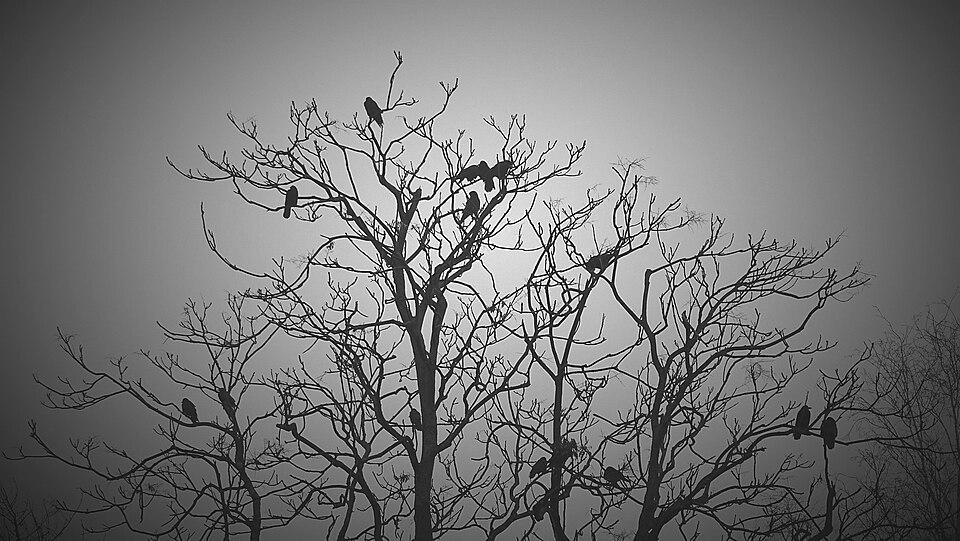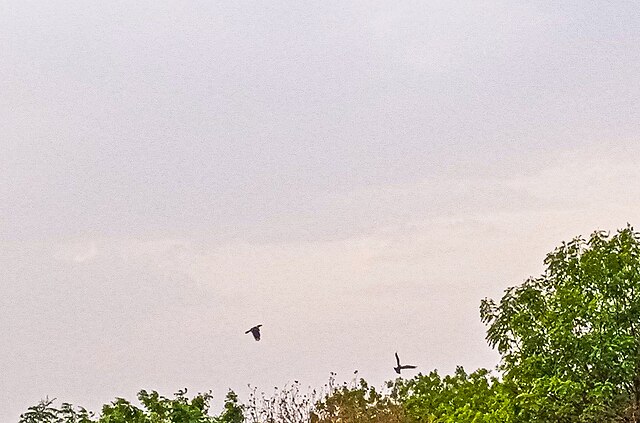
Timelines 10
Man and his Senses 10
Man and his Inventions 10
Geography 10
Fauna 10
Timelines 10
Man and his Senses 10
Man and his Inventions 10
Geography 10
Fauna 10

By the close of the nineteenth century, learned men and curious amateurs across Europe were taking stock of the world in new ways — not only in museums and drawing rooms, but in the small personal worlds of hobbies and collections. A similar impulse links two places that are now far apart: the rolling, fossil-bearing landscapes of the Czech Republic and the wetlands and forests of India. In stone and in flight they tell one continuing story of birds — a story that moves from an Oligocene layer in Moravia to the carefully tended aviaries of a Czech zoo, and onward to the fragile marshes of Assam in India.
The story begins, surprisingly, with a tiny fossil. In 2012 the bird Picavus litencicensis was described from early-Oligocene sediments of the Czech Republic by researchers as follows. “The specimen is small, delicate — the bones show a mix of primitive and derived features suggestive of early Pici, the group that would include woodpeckers and barbets. Anatomically it hints at zygodactyl feet and climbing specialisations that later found full form in forest-dwelling lineages elsewhere”. In short, a bird that lived in what is now Central Europe more than thirty million years ago belongs to a branch whose later relatives flourish today in Asian forests. The study that named Picavus provides the measurements and the comparative description; later regional overviews place the find among other Oligocene bird life of the Outer Carpathians.
This paleontological note has a simple message: evolution works across place and time. The little Czech Republic fossil is not merely a curiosity in a cabinet; it is a hinge connecting deep time to living bird communities. In India, barbets and woodpeckers — bright, vocal, and adept at climbing — are visible heirs of the functional roles hinted at in the Picavus skeleton. The presence of such a stem-group in Oligocene Europe reminds us of the lineage movements and changes in animal communities of the Cenozoic, and that bird groups redistributed between continents, so that what we now consider a richly Asian group had ancestral echoes in Europe’s ancient forests.
Turning from deep time to the present, Czechia itself carries a modest but distinct set of endemic animals. Regional lists that compile endemic species emphasise how local landscapes harbour unique biological identity: species bound to particular woodlands, hill ranges and river valleys that mark Czech natural history. These checklists — compact, sometimes surprising — are a reminder that a nation’s natural heritage combines both the living and the fossil record. The impulse to name and to catalogue is the same that led nineteenth-century collectors to amass postcards and that leads palaeontologists to describe minute skeletal fragments.
There is, however, a warmer and more immediate link between Czech Republic and India, a present-day tale of care and cooperation. In recent years a Czech zoo sent precious birds to Assam as part of conservation efforts: pairs of the endangered White-winged Wood Duck were transferred to the State Zoo in Guwahati to help bolster captive-breeding and recovery programmes for a species reduced to a few hundred individuals in the wild. Reports on this shipment framed it as an instance of international collaboration, with zoo-to-zoo transfers that, when done carefully, can supplement local conservation work and buy time for wild populations. Such transfers are small acts, but in conservation they can have outsized meaning.
Placed against the wider picture of Indian bird conservation, the duck transfer is one part in a larger, urgent conversation. India is home to several birds facing grave threats. The Great Indian Bustard — its numbers now perilously low on India’s arid plains — and a host of wetland and forest species that suffer from habitat loss and fragmentation. Popular conservation lists and expert inventories repeatedly underscore how rapidly suitable habitats are shrinking and how precarious many populations have become. Institutions such as the Wildlife Institute of India provide much of the technical backbone for responses to these threats: conducting field research, advising management, and training the next generation of conservationists. The WII’s role is central to national planning and species-recovery efforts.
There is yet another surprising antiquity to add to the tale of India’s birds. Ancient DNA research has shown that the subcontinent’s bird life has experienced a striking turnover. A molecular palaeontology study reported Late Pleistocene evidence for ostriches in the Indian subcontinent — a finding that changes our understanding of which large birds once trod its plains. The presence of ostriches in India during the Pleistocene is a reminder that past climates and ecosystems supported animal communities very different from those of today. Fossils and ancient DNA together remind us how the map of bird distributions has shifted with geology, climate and human agency.
What do these disparate threads amount to? Perhaps simply this: that birds — in stone, in cages, and in wild places — knit together histories we rarely imagine as continuous. A small fossil from Moravian deposits hints at an evolutionary trajectory visible in India’s forests. A Czech zoo’s careful shipment of endangered ducks shows how human institutions can cooperate across borders to sustain species. Indian conservation bodies and field researchers work daily to prevent extinctions, while ancient DNA research reveals that the subcontinent’s present is layered upon deep and surprising pasts. Each element is partial; together they form a broader narrative about continuity, loss and cooperation.
The form of the narrative is familiar to anyone who studies cultural or natural archives: from broad patterns to a focused case study, then back to a wider reflection. In much the same way that the late-nineteenth-century postcard connected Bombay households to strangers in Prague and Buffalo, so too does modern conservation connect a Czech aviary to the marshes of Assam. Cards once carried images of public buildings and bazaars; today living birds carry with them genetic blueprint, hope, technical expertise, and the responsibility of many hands.
If these links teach anything, it is that natural history does not respect the borders we draw on maps. Fossils in Central Europe, endemic lists compiled by naturalists, zoo records and scientific studies of ancient DNA — all of these speak to a shared impulse to record, to care, and to connect. Czechia and India lie far apart on the globe, but in the small, enduring world of birds they are close neighbours: both custodians of fragments of a long and continuing story.
Sources:
https://tinyurl.com/2yj6c3pl
https://tinyurl.com/29t89ys3
https://tinyurl.com/2a93mj3l
https://tinyurl.com/2clfyzc8
https://tinyurl.com/22f4o49t
https://tinyurl.com/29wv9l89
https://tinyurl.com/268u3fl4
https://tinyurl.com/yc8z5o47
https://tinyurl.com/2855vz2z
https://tinyurl.com/22mn2cce